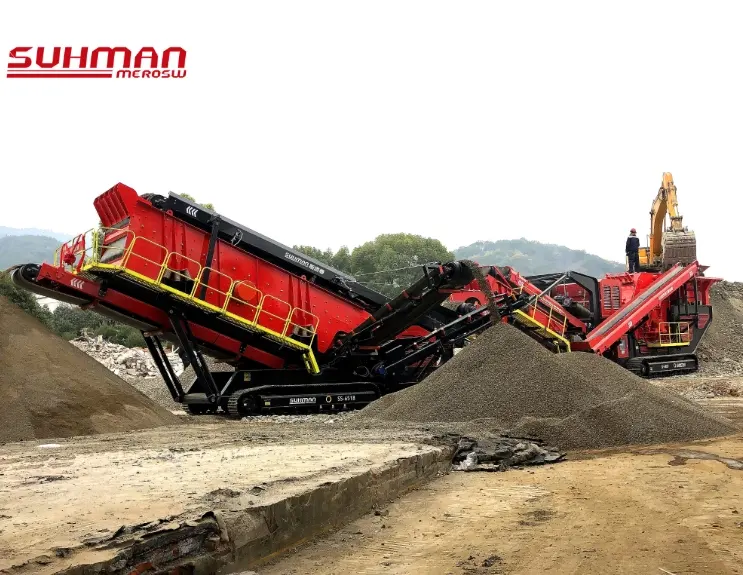Crusher Types and Working Principles
Release time: 2025-03-19
Table of Contents
What is a Crusher?
A crusher is equipment designed to reduce the size of solid polymer pieces to a specified fraction. One of the key principles of efficient polymer crushing (or any other material) is: "Do not crush anything unnecessary." By ensuring uniformity at the input, we reduce costs (electricity, repairs, knife sharpening, etc.) and improve the final result. Crushing is essential for subsequent stages of production and/or processing.
In the production of polymer products, crushers are used to process solid plastic items, used bags, and discarded containers to obtain secondary raw materials. This secondary material is mixed with primary raw materials to lower production costs.
Methods of Crushing
Crushers can break down or crush materials using various methods:
- Compressing
- Splitting
- Breaking
- Cutting
- Sawing
- Abrading
- Impacting
In industrial settings, the most common methods are splitting, compressing, abrading, impacting, and cutting. The choice of crushing method, and thus the crusher design, depends on the material's failure characteristics. Brittle materials are typically crushed by compressing, splitting, impacting, or cutting, while ductile materials are crushed by cutting or abrading. The method also affects the final particle size; for example, splitting produces larger pieces, while abrading can yield fine, powder-like material.
The strength of the input material influences the force required, which can be categorized as:
- Low (up to 10 MPa)
- Medium (10 to 50 MPa)
- High (over 50 MPa)
Types of Crushing
In industry, there are two main types of crushing: batch and continuous.
Batch crushing is used for small-scale production and is less economically efficient. It often involves a closed crushing cycle and may heat the material. A typical example is an agglomerator.
Continuous crushing is employed in large-scale operations with open or closed production cycles, such as in polyethylene terephthalate (PET) recycling lines.
Continuous crushing can involve single or multiple stages, depending on the required final particle size.
Types of Crushers
Shredders are used for coarse (preliminary) crushing. For more details, see the article on shredders.

Jaw Crushers
Jaw crushers are used for crushing large and medium-sized brittle materials with high strength. The key parameter is the size of the feed opening formed by the movable and fixed jaws. Crushing occurs as the jaws come together in the crushing zone. When the jaws move apart, the material falls further down. The jaws are angled to create a wider crushing zone at the top (near the feed) and a narrower one at the bottom (near the discharge). Jaw crushers are commonly used for materials like rock, limestone, concrete, brick, asphalt, glass, and ceramics.
Roll Crushers
Roll crushers are used for crushing medium and small brittle materials of high and medium strength. They work by drawing material into the narrowing gap between two parallel rollers rotating towards each other. Roll crushers can have one to four rollers, with smooth, corrugated, or toothed surfaces. Smooth and corrugated rollers are for medium-strength materials, while toothed rollers are for low-strength materials. The output size is determined by the gap between the rollers. Roll crushers are ideal for materials prone to sticking or containing sticky inclusions, as scrapers clean the rollers during operation. They are widely used in chemical, mining, abrasive, and recycling industries.
Impact Crushers
Impact crushers are used for crushing brittle materials, such as thermosetting plastics. They work by applying impact force from one side. This category includes rotary and hammer crushers. Rotary crushers have fixed beaters on the rotor, while hammer crushers have hammers attached via hinges. Impact crushers can handle large, medium, or small materials depending on their design (e.g., marble, coal, limestone, gypsum, gravel, asphalt, concrete, brick, glass). Their size is determined by the rotor's length and diameter.
Hammer Crushers
Hammer crushers use hinged hammers to crush materials through kinetic energy. They are used for medium and small materials like bulk, lump materials, plastics, wood chips, cardboard, and construction materials. The output size is controlled by a grate at the bottom of the crusher.

Knife Crushers
Knife crushers are commonly used for crushing small thermoplastic waste. They work by cutting material between rotating (movable) and fixed knives. A sieve below the rotor determines the output size. Knife crushers can have horizontal or vertical rotors, with the latter being more space-efficient.
The design of knife crushers varies in rotor configuration, number of knives, drive power, rotor speed, feed opening size, and discharge system. The rotor’s power and knife design significantly affect performance. Common knife configurations include:
- Swallowtail: V-shaped knives for soft, highly elastic, and heat-sensitive polymers.
- Diagonal cut: Knives arranged diagonally for thermoformed and blown products, hollow profiles, and films.
- Cascade rotor: Multiple small knives for thick-walled parts, ingots, extrusion waste, and sprues.
- Vertical knife configuration: Parallel knives for lightweight materials like foam, PET bottles, small castings, and films.

Types of Materials for Crushing
Most polymers are chemically inert and non-biodegradable, making it essential to recycle production waste, defective castings, and household plastic waste. However, this requires preliminary crushing.
Plastic materials can be categorized into three groups for crushing:
- Films: Bags, acrylic, polyethylene, PVC films. These require shredders with tearing or cutting action.
- Small thin-walled items: Bottles, containers, cans, pipes. These are crushed using cutting disks, knives, or teeth.
- Large thick-walled items: Molding defects, sprues, profiles. These require crushers with compressing or impacting action.
Multi-stage crushing may be used to achieve a fine, uniform particle size, often involving different types of crushers.
Why Crush Waste?
Crushers are vital for reducing polymer waste to a size suitable for granulation. Crushing improves the quality of granules, making them more uniform for industrial use. Additionally, crushing reduces waste volume for transportation and enhances the quality and value of recycled granules. Overall, using crushers and granulators is an effective way to recycle waste and produce high-quality granules for further industrial use.


